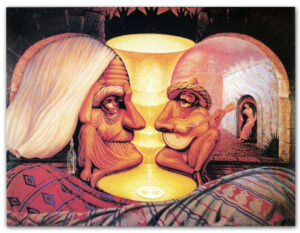Consulta de Psicología Tarifa
psicología & psicoterapia & coaching
Gestalt Therapy A Holistic Approach to Self-Awareness and Growth
A Holistic Approach to Self-Awareness and Growth

Gestalt therapy is a psychotherapeutic approach rooted in humanistic psychology. It focuses on enhancing awareness of our mental, emotional, and physical states in the present moment. Rather than delving into past events, Gestalt therapy emphasizes experiencing the “here and now.” This awareness helps individuals connect with their needs, fears, and unresolved emotional wounds, promoting personal growth and healing.
Key Principles of Gestalt Therapy
In Gestalt therapy, the focus is on experiencing rather than merely “talking about” issues. Through exercises, experiments, and body-oriented methods, clients gain a deeper understanding of themselves. This process helps individuals uncover their subconscious beliefs, behaviors, and emotional blind spots. Often, we hold a perception of ourselves that may not align with how others see us. The therapist’s role is to guide the client through this journey of self-discovery, helping them integrate new insights and find solutions.
The goal of Gestalt therapy is to enable individuals to live more freely and authentically. By peeling away layers of conditioned behavior—like peeling an onion—clients can reconnect with their true selves and develop a deeper sense of fulfillment.
The Origins of Gestalt Therapy
Gestalt therapy was developed by Fritz Perls and his wife Lore Perls in the mid-20th century. Fritz Perls famously stated that Gestalt therapy was too important to be limited to the “sick.” The approach not only aids in healing psychological symptoms but also fosters personal growth, development, and a healthy attitude towards life.
The term “Gestalt” refers to the idea that “the whole is greater than the sum of its parts.” This reflects the holistic nature of Gestalt therapy, where the individual is viewed as a complete organism, and symptoms are understood in relation to the person as a whole. Often, childhood behaviors that once helped us survive continue into adulthood, even when they limit us.
Who Can Benefit from Gestalt Therapy?

Gestalt therapy is ideal for individuals who are serious about enhancing their self-awareness and personal growth. It is particularly helpful for those looking to understand why they struggle to reach their full potential.
Research suggests that only 5% of our daily actions are fully conscious, while the rest occur automatically. These automatic behaviors are often driven by fear, pain, shame, or deep-seated impulses, such as the need for approval or love. In inappropriate situations, these impulses can distort our perception of reality, limiting our ability to respond authentically.
With the therapist’s support, clients learn to recognize these unconscious mechanisms and explore healthier, more authentic ways of engaging with the world.
Gestalt Therapy's Roots and Influences

Gestalt therapy draws on various influences, including psychoanalysis, body-oriented therapies, and existential philosophy. Fritz Perls was influenced by Wilhelm Reich’s exploration of muscular tension (or “muscular armoring”), which connects bodily experiences with childhood traumas. Carl Jung’s concept of the collective unconscious also contributed to Perls’ understanding of human psychology.
Other significant influences include psychodrama by Jakob Levy Moreno and creative indifference by Salomo Friedlaender. These ideas helped shape Gestalt therapy’s focus on embracing the “middle ground” between opposites, such as tension and relaxation, and its use of expressive, theatrical techniques in therapy.
Additionally, phenomenology, the philosophical study of perception, plays an essential role in Gestalt therapy. Phenomenology posits that our subjective interpretation of experiences determines our behavior. By becoming aware of our perceptions, we can change how we interact with the world.
The Therapeutic Process
 In Gestalt therapy, the focus is on the present moment and on developing awareness and responsibility for our actions. The therapy process aims to release chronic muscular tensions stored in the body and promote emotional and psychological well-being.
In Gestalt therapy, the focus is on the present moment and on developing awareness and responsibility for our actions. The therapy process aims to release chronic muscular tensions stored in the body and promote emotional and psychological well-being.
Clients work through their past conditioning and limiting beliefs to reach a state of self-acceptance, authenticity, and openness to new experiences. This holistic approach helps individuals face life’s challenges with greater clarity and satisfaction. The ultimate goal is for clients to carry the healthy attitude fostered during therapy into their daily lives, enabling lasting change and personal growth.
Key Benefits of Gestalt Therapy:
Increased self-awareness and emotional clarity
Personal growth and development
Greater connection with one’s needs, desires, and emotions
Improved ability to live authentically and respond to life’s challenges
Release of chronic tensions held in the body
A holistic approach to healing and well-being
Gestalt therapy is a powerful therapeutic method that offers a comprehensive and flexible approach to self-awareness, personal growth, and emotional healing. Whether you’re seeking to resolve deep-seated issues or simply want to improve your well-being, Gestalt therapy provides the tools for living a more authentic and fulfilling life.

